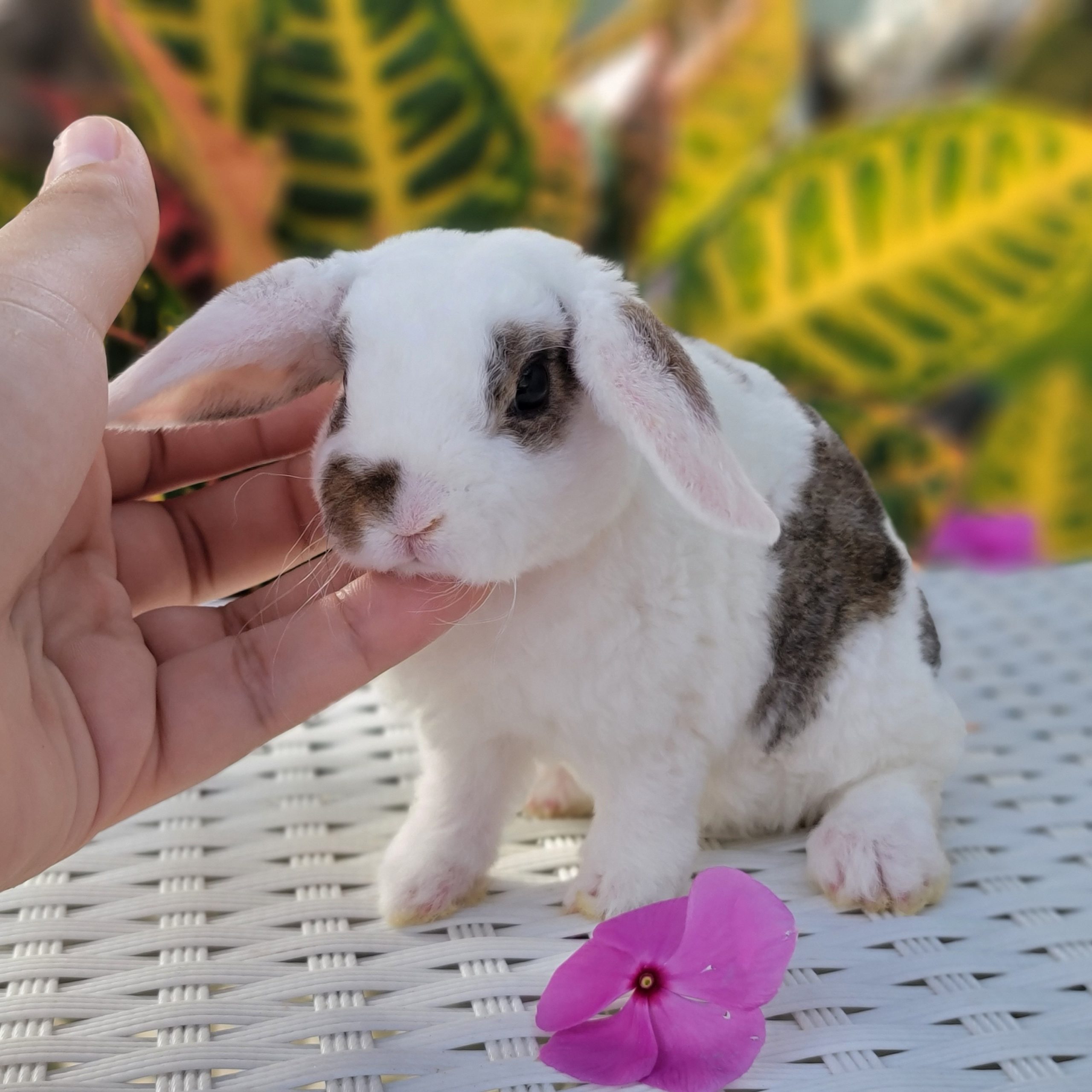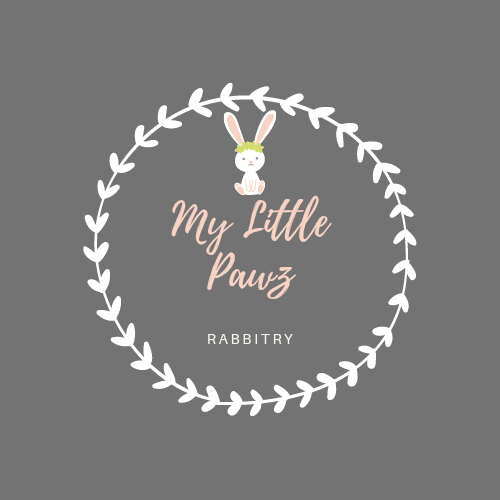Getting Started
Congratulations on your new furry friends! Here is some information on how to get started. You will learn what kind of foods your bunny can eat and what kinds of food they shouldn’t eat. You will also learn what enclosure is best for them and more!

Feeding Instructions
Bunnies under 4 months should not eat any vegetables, treats, or Alfalfa Hay. This will give them an upset tummy and diarrhea. Once they start eating vegetables and fruits make sure to not give them too much. There are a variety of fruits and vegetables they can eat but there is also some they can not eat. You can find a sheet of fruits and vegetables they can eat in your bunny bag that will be provided with the purchase of your bunny. Transition bunnies to a new feed slowly. They are currently on Manna Pro and Purina Complete pellets. With the purchase of a bunny, you will be provided a bag of food the bunny is currently on to help transition to whichever food the new owner decides to feed. Water should be provided at all times. If your bunny is not eating make sure they have enough water. Sometimes the ball inside the water bottle cap can get stuck and could be the reason your bunny is not getting enough water. Our bunnies drink out of a water bottle. This maintains the water clean and free from bacteria. Lixit water bottles work best for us and we use round plastic bowls that hook onto their cage or ceremic bowls for food . Timothy Hay is also good to leave out for your bunny constantly, they really like it.
Bun Home/Enviornment
Bunnies are more comfortable indoors. Heat is very dangerous for them. They should be in temperatures between 60-65 degrees. They can be in temperatures lower than that but no higher than 85 degrees which they will be in serious danger and show signs of overheating. If your bunny is going to be living outdoors make sure the cage or hutch being used is safe from other predators that can get in like snakes and mice. Make sure the area is well ventilated and put a fan for them if gets over 85 degrees. Once your bunny is in their new home try not to hold them so much so they can adjust to their new home first. Let them explore their new area. It may take some time for them to adjust. Be patient and do not give up. If there are children or other pets in the home please do not leave your bunny unattended. They are very fragile and can get startled easily. We use wire cages for our rabbits which is much easier to clean up. Put a bunny mat in their cage so they do not get sore hocks and have somewhere to rest their feet. A 30×30 cage would be great for one bunny. The bigger the better though. We use pine pellets for the trays which work great and absorb the smell. Another option is a hutch or playpen. Bunnies can be litter box trained as well. For litter boxes, we use pine pellets as well. Urine gives off ammonia which can be toxic to your bunny. Bunny’s area should be cleaned at least once a week or every couple of days if a litter box is being used. Vinegar can be used to disinfect and clean the bunny area. There are also other pet-safe products that can be used.
Select From all of our Breeds


Mini Push Lops

Holland Lops

Velveteen Lops
Why Us
Healthy Bunnies
Our bunnies are kept indoors with A/C at 62 degrees. They are dewormed once a month.
Quality Bunnies
All of our rabbits are purebred, top quality, and pedigreed. They are handled from a young age.
Bunny Travel
We work with trustworthy transporters that deliver all around the United States. We also work with Airline Cargo.
Find a Bunny Companion Today

